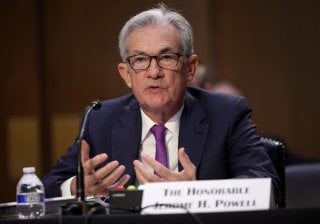The Federal Reserve Goes on the Offensive to Tackle Inflation
The Fed took the dramatic step of raising interest rates for the first time in three years.
On Wednesday, the Federal Reserve raised interest rates for the first time since 2018 as it began its efforts to tackle red-hot inflationary pressures that have reached a four-decade high.
With the federal funds rate now sitting between 0.25 and 0.5 percent, the highly anticipated move marks the end of the Federal Reserve’s easy money policy.
“We feel the economy is very strong and will be able to withstand tighter monetary policy,” said Federal Reserve Chairman Jerome Powell after the 0.25 percentage point hike.
In a hawkish move, the committee also penciled in rate increases at each of the six remaining meetings this year. This could point to a consensus funds rate of 1.9 percent by the end of the year.
“We are attentive to the risks of further upward pressure on inflation and inflation expectations,” Powell added. “The committee is determined to take the measures necessary to restore price stability.”
Federal Reserve officials also revealed that they have adjusted their economic outlook to reflect their belief that inflation will rise and GDP growth will slow down. “Inflation remains elevated, reflecting supply and demand imbalances related to the pandemic, higher energy prices, and broader price pressures,” they said in a statement.
“The invasion of Ukraine by Russia is causing tremendous human and economic hardship. The implications for the U.S. economy are highly uncertain, but in the near term the invasion and related events are likely to create additional upward pressure on inflation and weigh on economic activity,” they continued.
Directly Affecting Americans
As for how the 0.25 percentage point increase will affect everyday life, Associated Press economics writer Christopher Rugaber noted that Americans will now “have to adapt to a very different environment.”
“Record-low mortgage rates below 3 percent, reached last year, are already gone,” he continued. “Credit card interest rates and the costs of an auto loan will also likely move up. Savers may receive somewhat better returns, depending on their bank, while returns on long-term bond funds will likely suffer.”
Recession Risk
In addition, Rugaber contended that the Federal Reserve will have to drive borrowing costs even higher than it anticipates, which could potentially tip the country into a recession. “The impact of a single quarter-point interest rate hike is inconsequential on the household budget,” Greg McBride, chief financial analyst at Bankrate.com, told the Associated Press.
“But there is a cumulative effect that can be quite significant, both on the household budget as well as the broader economy,” he added.
According to the latest CNBC “Fed Survey,” the probability of a recession in the United States has been raised to 33 percent over the next twelve months, which is up 10 percentage points from the beginning of February. For Europe, the probability of a recession sits at a shocking 50 percent.
Ethen Kim Lieser is a Washington state-based Science and Tech Editor who has held posts at Google, The Korea Herald, Lincoln Journal Star, AsianWeek, and Arirang TV. Follow or contact him on LinkedIn.
Image: Reuters.

